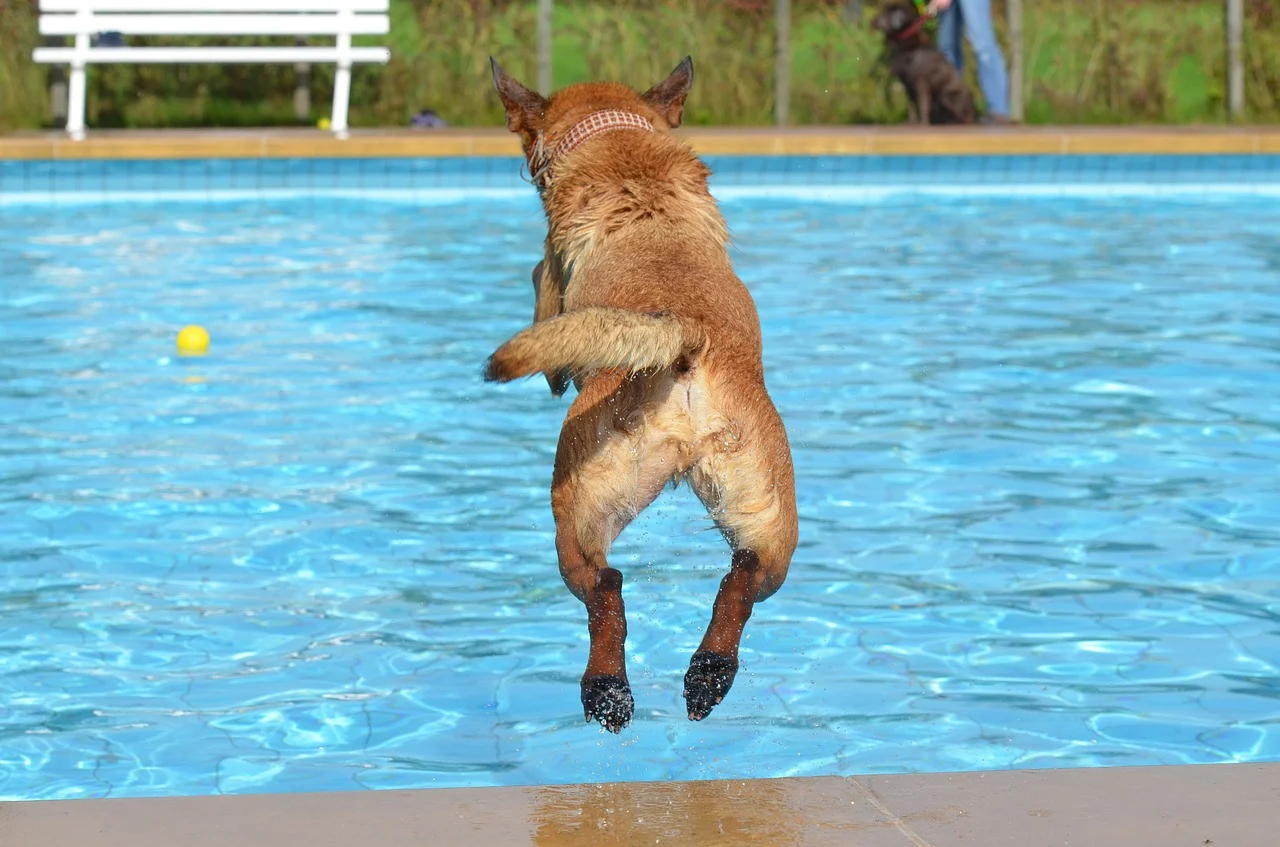Swimming is not only a lot of fun for most dogs, but it is also very healthy for our four-legged friends. This health aspect is especially noticeable in older dogs. Your dog swimming can help with joint diseases such as osteoarthritis or spondylosis, swimming even has a therapeutic effect.
With a dog swimming, their joints are gently trained and the muscles are massaged. It also strengthens the muscles and the cardiovascular system.
But can every dog swim?
Every dog can theoretically swim from birth on. So, no you don’t have to teach them. It’s just that some breeds are better at it, while others are a little worse.
Breeds such as the Labrador or the Golden Retriever were made for hunting in the water. So they are natural talents when it comes to swimming. But, breeds with a short nose and that have difficulties breathing should only swim in very shallow water and under close observation.
ALSO READ:
- Dog nail polish: How safe is it to paint their nails
- Dog exercise pen: Why your pooch needs one!
- How to train your dog to walk on a leash and much more! Training tips
- Dog Whistle: All You Need To Know
- Cesar Millan – Advice from the Dog Whisperer
- Dog Training: Teach Your Dog 5 Basic Commands
Dog swimming – What if they hate it?
As mentioned, you don’t have to teach your dog how to swim. All of them know how to swim. But some just don’t like it.
Not every four-legged friend is enthusiastic about water from the start. But, most dogs won’t have an issue with water if you take it easy and they will eventually have fun with it.
We have some tips on how to get your dog used to swimming:
- Slowly get your dog used to the water. First, let him explore
- For every paw that touches the water, you should give your dog great praise or even a treat
- Use toys so your dog can get used to the water more easily
- First, let them practice in shallow water and slowly work your way down into the deeper water
The most important tip we have for you is to never force your dog to go into the water, or even push him into the water. That would destroy any chance of getting used to the water, and they’d only be scared of it!
It is best to get your pet used to swim at a young age. For inexperienced owners, a visit to a dog school with a dog pool is ideal. The swimming lessons cost money. But your dog gets the chance to get used to swimming and water with a pro. Of course, you can also do it yourself. Remember, the best way to get your dog used to water is through games and toys.
Safety first
The most important rule when swimming with your dog is: never leave your dog unattended by or in the water! It’s not unusual for dogs to get tired easily when they are swimming. In the event of exhaustion, your dog may no longer be able to swim on its own. Ideally, you should et them a life jacket for dogs. Because it can provide security, especially for short-breathed breeds or senior dogs.
A life jacket will keep your four-legged friend afloat even when they run out of breath. Life jackets for dogs are available in different sizes, most of which are based on weight. Also, buy a good-quality vest with padding on the stomach. When buying, make sure that the life jacket does not constrict the dog and that he can still run free.
Another safety tip is to remember that your dog can’t swim everywhere. So, stick to the rules and do research where your dog can swim.
Other safety tips:
In addition, we have some other safety tips that might come in handy:
- Your dog should only swim when he is in good health. Dogs with severe heart disease, open wounds, or ear infections, for example, shouldn’t go into the water.
- Avoid stinking, stagnant water, water on which an oily layer floats, or in which dead animals swim. Polluted water can cause disease.
- Blue-green algae are common, but dogs are very sensitive to them. The most common reactions to it are skin discomfort and diarrhea.
- Just like with humans, swimming on a full stomach is a no-go!
- Make sure that your dog can always get out of the water comfortably without you having to help him, for example by pulling on his front legs. There is a risk of injury.
- Take off the dog collar when swimming to be on the safe side. Your dog’s paw could get stuck on it or they get caught in something else.
- Your dog should not jump into the cold water immediately if it’s very hot outside. They should first slowly get used to the water in order to avoid circulatory problems.
- Make sure your dog isn’t in the blazing sun for too long, even when they are in the water. They should take breaks in the shade.
- Do not let your dog swim in places with strong currents.

